
WIP - New Local AI GUI Application Simplifies Contracts
Overview
Existing user research reveals that customers often sign contracts without understanding their implications.
- An Adobe Acrobat Contract Survey from January, 2025 reveals that 70% of customers admit to signing contracts without knowing what’s in them. 32% of workers have faced negative consequences due to misunderstandings in contracts. The key factors behind this data point are that contracts are too long to read and the negative emotions surrounding contracts
- Another survey from the UK’s College of Law also reveals that 68% of participants admitted they either don’t read or don’t understand the contracts they sign. More than half of survey participants admitted they read their contracts to an extent but don’t always understand what they’re agreeing to. More than one in ten said they “hardly” or “never” read their contracts at all
Additionally, there are concerns with AI violating one’s privacy:
- A 2023 study by KPMG and the University of Queensland found three in four customers globally feel concerned about the potential risks of AI
- KPMG also found 63% of consumers were concerned about the potential for AI to compromise one’s privacy.
- A recent Pew Research Center also found that 81% of consumers think the information collected by AI will be used in ways people are uncomfortable with, as well as in ways that were not originally intended
In summary, the data reveals that AI can be a tool for analyzing contracts. However, there’s also the potential for AI to be a privacy concern as data may be sent to a company’s servers without a person’s knowledge. This suggests that there is a potential for the creation of a product that both:
- Allows for users to summarize and interact with their documents
- Also honors their privacy and promises to never send any confidential data to a company’s servers
My Role
I am the sole UX Designer who is using the following methods to propose a new UX for a customer-centric and open-source tool:
- Research & Discovery (Ongoing) ✅
- Analysis of Public Research ✅
- Analysis & Release of Survey Data ✅
- Workflow Diagrams ❌
- Lo-Fi Wireframes ❌
- Lo-Fi Prototype ❌
- Hi-Fi Mockups ❌
- Hi-Fi Prototype ❌
Timeline
- Foundational Deliverables: May 2025 – July 2025
Lo-Fi Prototype: August 2025 – September 2025
Hi-Fi Prototype: September - November 2025
Tools
- Penpot
- LibreOffice Docs
- Social Media Polls
Guiding Principles
- Responsible Use of AI - this project is committed to AI being used for deliverables when appropriate, while not at the expense of problem solving
- Transparent use of images and software packages - all tools and images used for this project will be mentioned with the license each package is under
1
Target Audience
- Younger users aged 20 – 24 who are enrolled in an institution of higher ed
- Middle-aged users from 30 – 40 are high-collar professionals in the industries of User Experience (UX), Graphic Design, Copywriting, Engineering, K-12 Education, and Government
- Older users from 50 – 60 working in Office Management, Finance & Accounting, Recreational Services, Psychology, and Social WorkMonthly budget is between $2000 – $8,000
- Internet Speeds
- Mid-Tier: 500 Mbps Download, 10Mbps Upload
- High-Tier: 1000 Mbps Download, 20 Mbps Upload
2
Hardware Requirements
The app should be able to run on as many Mid to High range machines:
Mid-Range Machines
- 4 to 8-core CPU
- 6 GB Ram
- 10GB available storage
- Windows 10,11, macOS Ventura, Sonoma, Sequoia (currently supported versions), and Debian-based Linux Distributions
High-Range Machines
- 8 to 16-core CPU
- 16 to 32 GB Ram
- 25 GB available storage
- Windows 10,11, macOS Ventura, Sonoma, Sequoia (currently supported versions), and Debian-based Linux Distributions
3
Assumptions
- Privacy – To address the issue of privacy, a local Large Learning Model (LLM) that can be 2 to 4.5 GB in size will need to be downloaded to the user’s computer with full disclosure of the process and how a local LLM differs from a cloud-based LLM such as ChatGPT, Gemini, Docusign AI, Adobe, etc
- Learning Fast – AI is changing quickly — more AI models are expected to come in the near future, and the cons of each AI now will someday be addressed
- Consent – Users want to be confident that any document uploaded to an AI model will never be shared with anyone without consent
- Quality UX First over Politics – Users expect a friendly AI experience, regardless of whether it’s open source or proprietary. Although, for conscientious users, open source will be a selling point
- Competition with Proprietary Offerings – Microsoft’s Copilot AI is fully integrated with the Windows 11 OS, which will make it challenging to promote the benefits of local AI and privacy to this user base
- Competition with Open Source Offerings – RedHat's OpenShift AI is becoming a top feature in Red Hat Enterprise Linux, so targeting Debian-based distributions will be a key strategy for this project
4
Constraints
- Voluntary Contributions – This will be an open source project, contributors will come and go as they please with no compensation
- Utilizing Alternative Channels – Only free methods can be used to attract new users and contributors. Other channels will need to be utilized. Potential options include Discord Chat, Facebook, X, and some Mastodon Instances that are free of charge
5
Discovery
During my research of AI tools, I discovered GPT4ALL from Nomic AI, an MIT-licensed application for Windows, macOS, and Linux that’s designed to run local AI models on desktops and laptops. Before starting this deep dive of the first launch experience, I wanted to ask the community what the biggest concerns are for running local AI models:
- Received 7 responses to a poll, across both LinkedIn and Facebook, that asked What would be your biggest concern with running a local AI model on your PC/Mac? with the following options:Large file size/long download
- Needing the best specs to run
- High electric bills
- Windows or macOS blocking it
- Used data to inform the user flow, with pros and cons, for the first launch of GPT4ALL on Ubuntu Linux

The poll results reveal that 57.6% are concerned with large file sizes and long download times, 42.4% expressed concern with needing the best specs to run local AI models, and no participants expressed any concerns with high electric bills or the operating system blocking its installation. The results suggest that:
- Informing users of the size and estimated download time for each AI model is crucial
- Users need to be aware of the system requirements of each model to avoid running ones which could damage their machine
6
User Personas
The goal is to generate two user personas that cover a wide spectrum of users, from novice creatives to power users. While the following user personas were generated using local AI models, the following images associated with these personas are being used courtesy of Pixalbay's Content License. In summary, Pixalbay's Content License allows for the use of their photos for free without requiring attribution to the author.
These user personas tell us that novice users may need more guidance on how to use the application, while power users will expect more advanced options.

Alex
Generated with Deepseek-R1
Age: 36
Gender: Male
Nationality: United States
Background: Alex is a 36-year-old IT professional who resides in the U.S. He has developed a strong reliance on AI for various aspects of his life, including personal productivity and decision-making. However, this reliance has been precipitated by his growing awareness of the ethical implications of AI.
Goals
- To maintain control over his private life and avoid sharing sensitive information online
- To use AI tools without compromising his autonomy or privacy
Concerns
- Loss of Control: Alex fears that his personal information may be misused or sold without his knowledge
- Fear of Compromise: He is vigilant about how his data might fall into the wrong hands, especially when using AI services
Compromises
- Limited Information Sharing: Alex prefers to share minimal personal details with online platforms and AI tools
- Trust in Medical Professionals: He feels comfortable sharing health information only with trusted medical professionals

Clara
Generated with IBM Granite 3.3
Age: 25
Gender: Female
Nationality: United Kingdom
Background: Clara is a 25-year-old UX designer residing in Northern Ireland, UK. She recently secured her dream job with a forward-thinking tech company that values user privacy above all else. With a strong background in human-computer interaction and a keen interest in ethical design practices, Sarah is passionate about creating digital experiences that respect user data and autonomy.
Goals
- Craft intuitive and engaging UX designs: As a UX designer, Clara aims to create seamless, enjoyable, and efficient digital products for her users. She strives to understand their needs, behaviors, and pain points to develop user-centered solutions
- Navigate NDAs without compromising confidentiality: With a non-disclosure agreement (NDA) in place due to her company's competitive and innovative projects, Sarah seeks ways to summarize the key terms of the NDA for internal discussions while maintaining confidentiality and avoiding any online sharing
Concerns
- Balancing innovation with privacy: Sarah is concerned about finding the right equilibrium between pushing creative boundaries and safeguarding sensitive user information. She wants to ensure her design solutions are both cutting-edge and respectful of user privacy
- Educating stakeholders: As a privacy advocate, Sarah is concerned about the lack of understanding around data protection among some team members and stakeholders who may prioritize business growth over user privacy. She seeks opportunities to educate them on the importance of ethical design practices
Compromises
Summarizing NDA terms: To facilitate internal discussions without breaching her NDA, Sarah compromises by creating a concise summary of key points regarding confidential information, data handling procedures, and permitted uses of shared project details. This summary is kept offline and only distributed to trusted colleagues on a need-to-know basis
Advocating for privacy within her organization: Sarah understands that changing entrenched attitudes towards privacy takes time and patience. While she may need to compromise on immediate design decisions, she remains persistent in promoting a culture of ethical design practices throughout the company
7
GPT4ALL Workflow Diagram
A workflow diagram was created for GPT4ALL at first launch to identify the current user experience and compare it against the existing research, poll results, and user persona.
Pros
- The explore models page offers great options, including Llama 3 8B Instruct and Deepseek-R1-Distill-Qwen-7B, to choose from
- Important data points including file size, RAM required, Parameters, Quant, and Type are included for each model
- Warnings are given to models not recommended for the user’s specs
- Users can also link GPT4ALL to cloud providers like OpenAI and Mistral
- HuggingFace models can be searched for and downloaded as well
Cons
The Welcome modal asks users if they would like to opt-in for anonymous usage-analytics and/or sharing of chats to the GPT4ALL datalake
The release notes conflict with the more important information about the usage analytics and the datalake
Unlike GPT4ALL, the datalake is under the Apache-2.0 license, and its purpose is to “ingest, organize and efficiently store all data contributions made to gpt4all”Latest News takes up half of the horizontal space of the main dashboard, which the poll results suggests may not be as important for users
If GPT4ALL is being launched for the first time, then the default dashboard may be overwhelming for some users
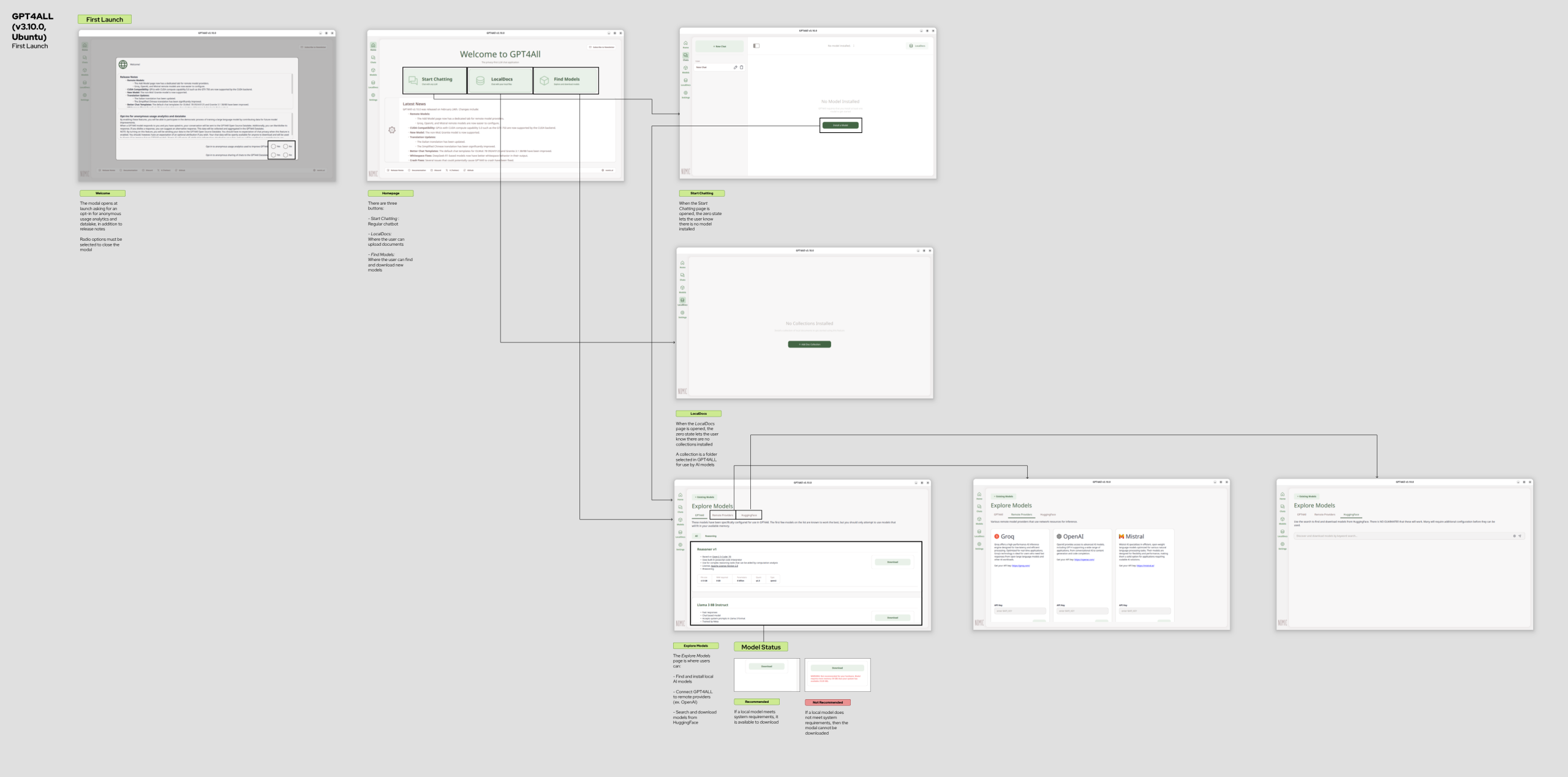
8
Current & New Information Architecture
Created a diagram illustrating the current information architecture of GPT4ALL, and then created a new IA for this new fork with the necessary changes aligned with customer goals:
- Redundant homepage is removed in favor of having four separate tabs for chats, files, models, and settings
- Latest News is removed
- Removing release notes, social media links, button to subscribe to newsletter, and company website
- Files are uploaded individually rather than needing to select a folder containing files
Features being retained from GPT4ALL:
- Option to link to cloud provider (OpenAI, Groq, Mistral AI, or custom)
- Three separate settings pages from general, model, and file settings for both novice and advanced users
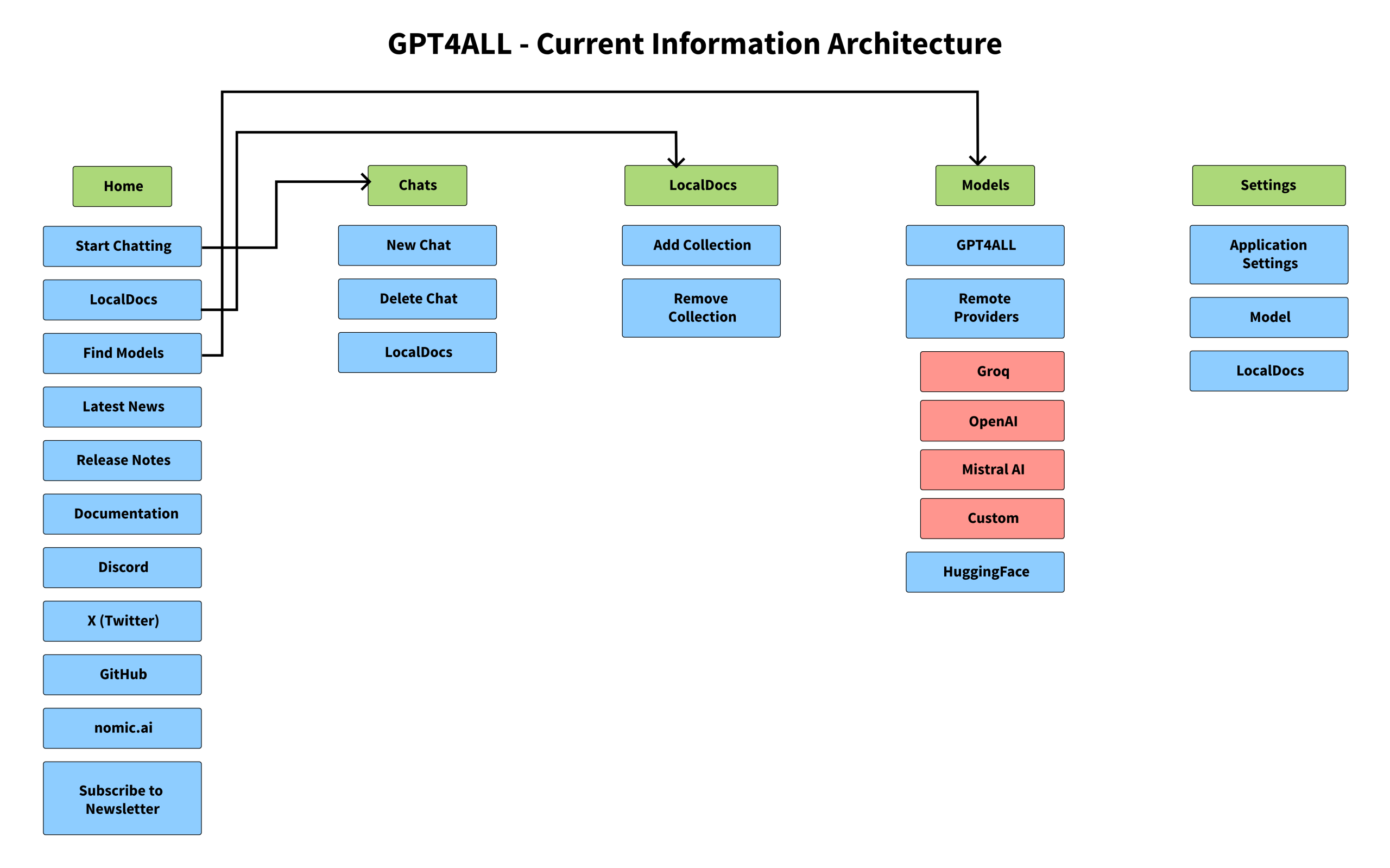
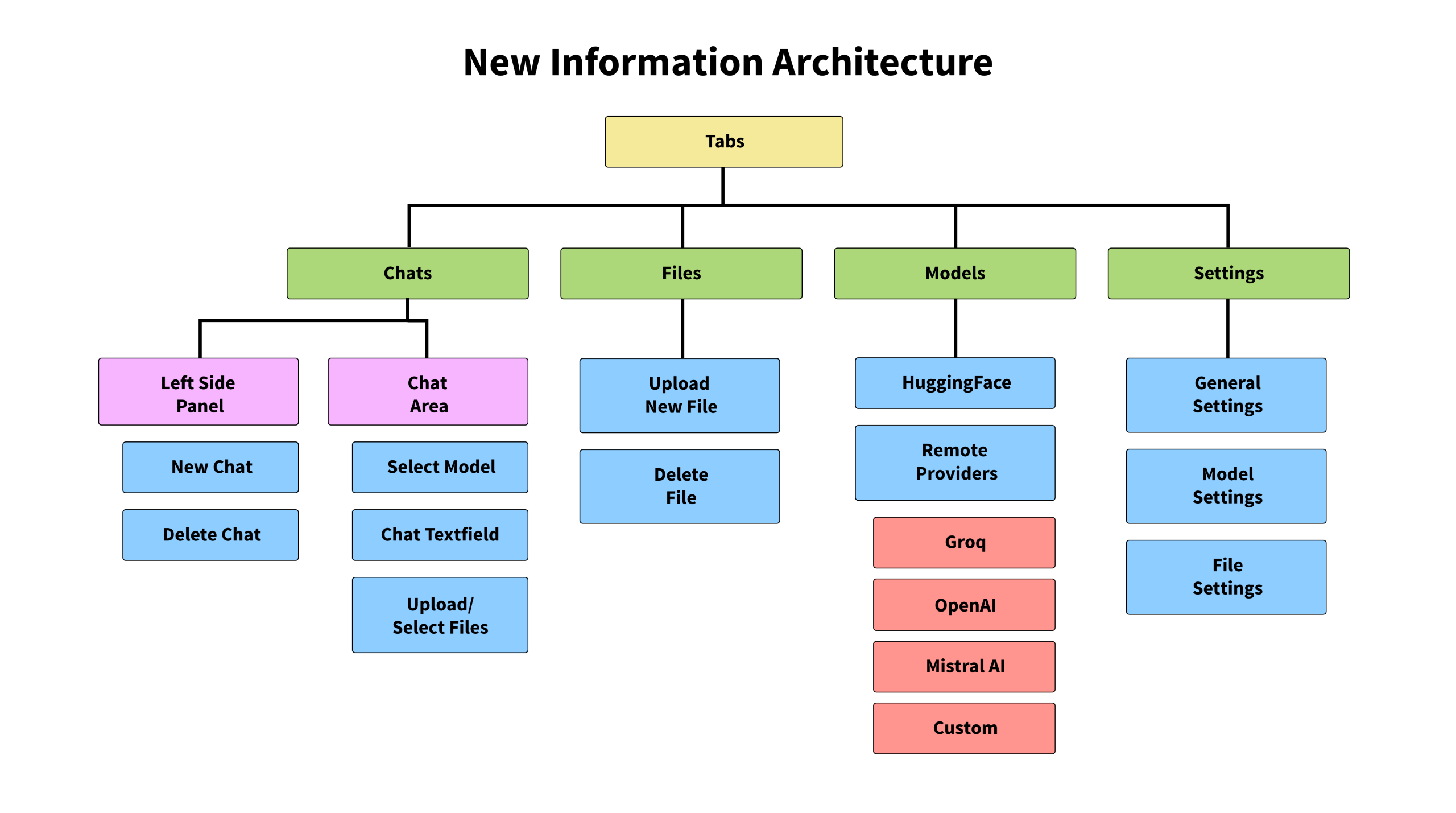
9
Workflow Diagrams
I created two workflow diagrams outlining two possible ways to handle onboarding. These diagrams look similar to development flowcharts, but with more visual thumbnails.
Open Questions
- Will users find it helpful to have a default picked by default?
- ...Or will they appreciate being able to choose the AI model to start with?
- Would it be helpful to include a system check in the beginning?
- ...Or will this be unnecessary?

Pros
- App checks the user's system specifications to ensure compatibility without completely blocking the user from continuing with the experience anyway
- A default model is picked for download so users don't feel overwhelmed by needing to pick a model from a long list to start using the application
Cons
- Users may feel let down if the application deems the system specifications not ideal for the default AI model - I download the app only for it to not be recommended?
- Depending on the user's internet speed, the downloading of a default AI model may take a while
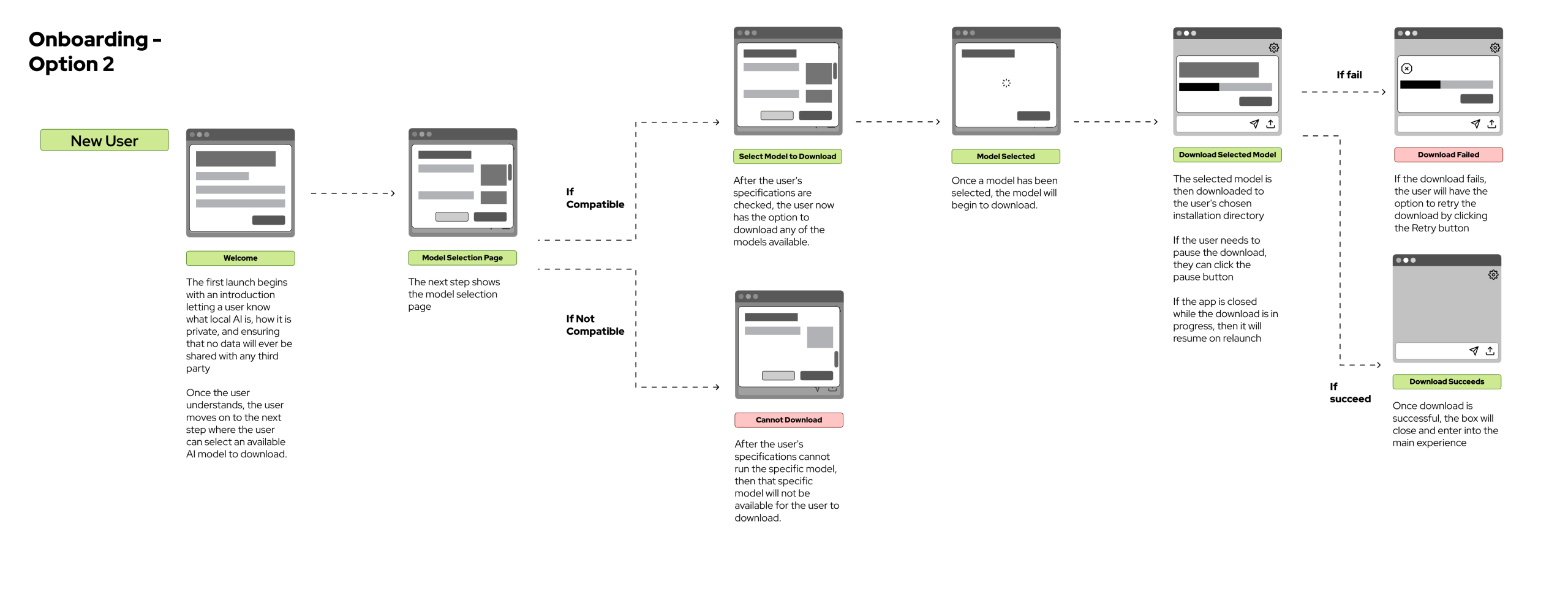
Pros
- Advanced users can choose which AI model to start with for their first experience with the application
- No compatibility check in the beginning that may be seen as unnecessary for some advanced users
Cons
- Beginning the experience with a long list of AI models to choose from may be overwhelming for novice users
- No guidance on what would be the best AI model to choose as a first time user
10
Sketches
To explore how to better layout the visual hierarchy within the new UI, I did three rough sketches show multiple concepts.
During this exercise, I began moving away from the existing GPT4ALL terminology and towards these more user-friendly labels:
- Chats - This is the page where all the user's chats with their LLMs are stored
- AI Store - Here the user can find othe models to download. The downside to this name is it assumes some AI models will be available for purchase, when all AI models are free to download
- Files - This is where the user can revisit all files uploaded for interaction with an AI model
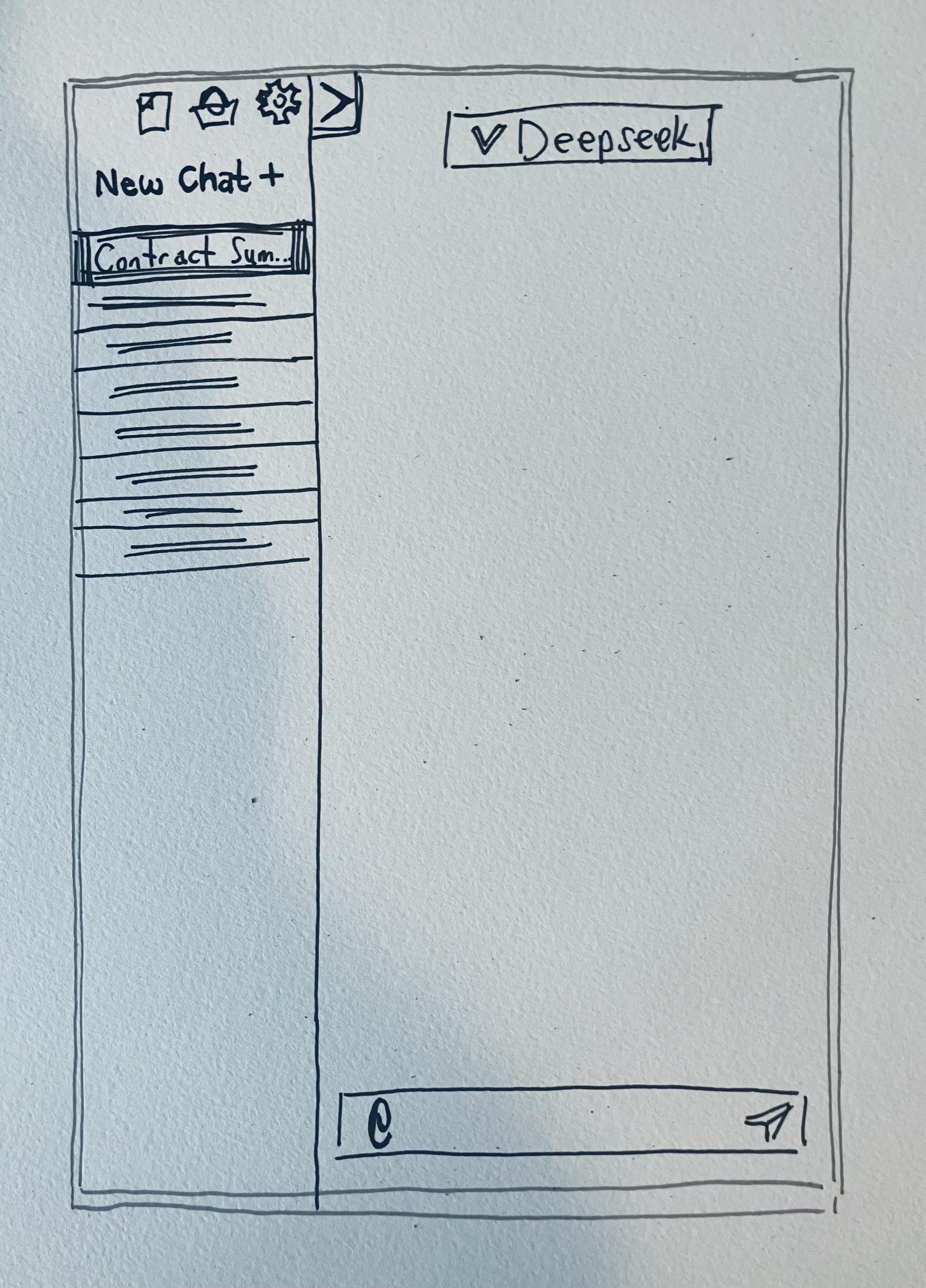
Collapsible Sidebar
- Offers a more familiar experience to ChatGPT, with all of the user's chats available within the sidebar
- The tab allows expanding/collapsing the sidebar
Considerations
- Is the familiar ChatGPT experience the best choice, or can we do better?
- The current location of the files, AI store, and settings icons may not be noticeable to users
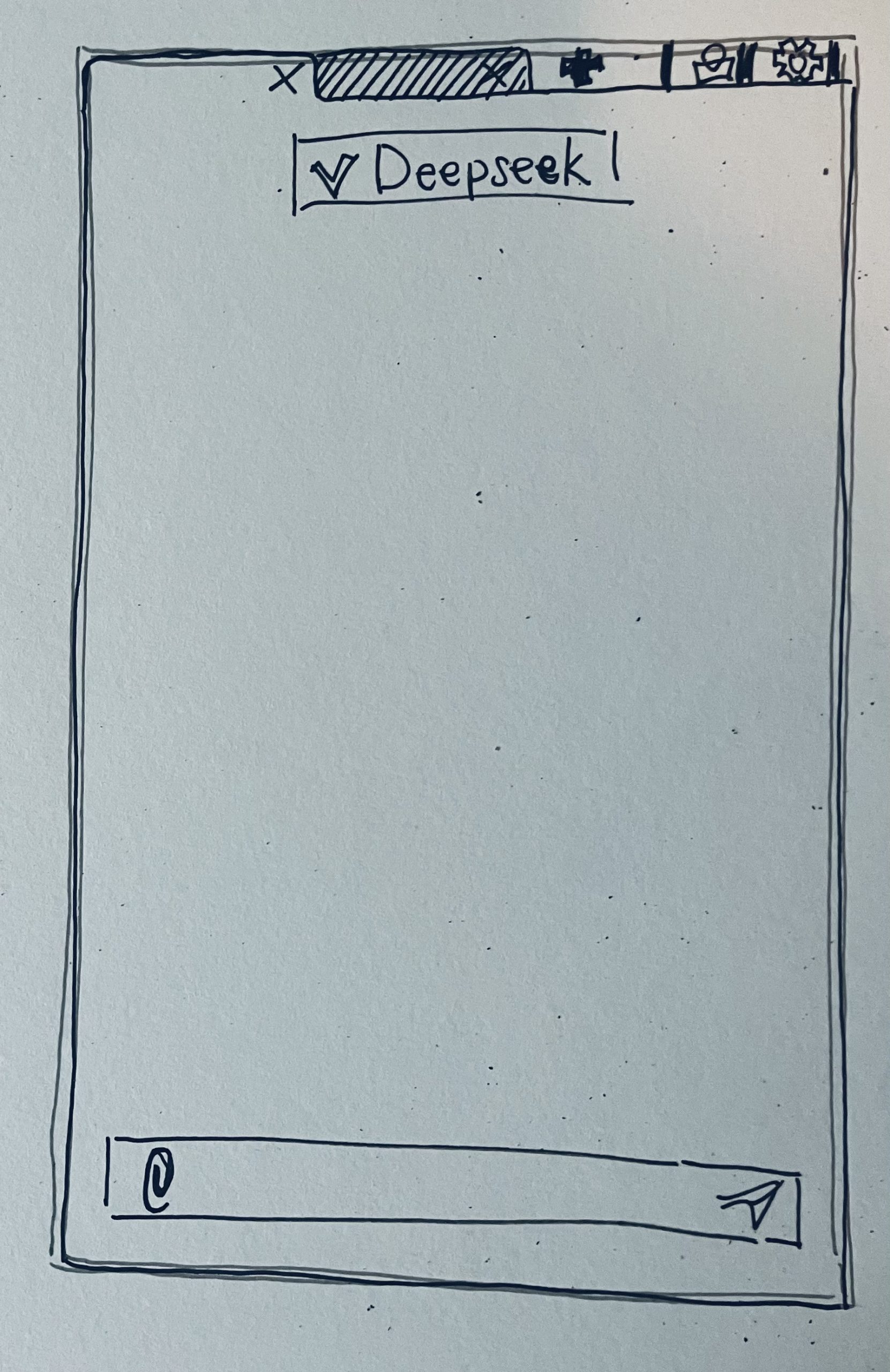
Tabs
- For this concept, each chat with an AI model is placed within a separate tab, like a browser window
- There is no way to revisit all of your files because it is assumed users will only be interested in uploading files for each chat
Considerations
- The tabs offer an advantage to the sidebar concept, where there's even a potential to mark specific chats with a color or emoji
- Icons on the top right corner may be more noticeable to users
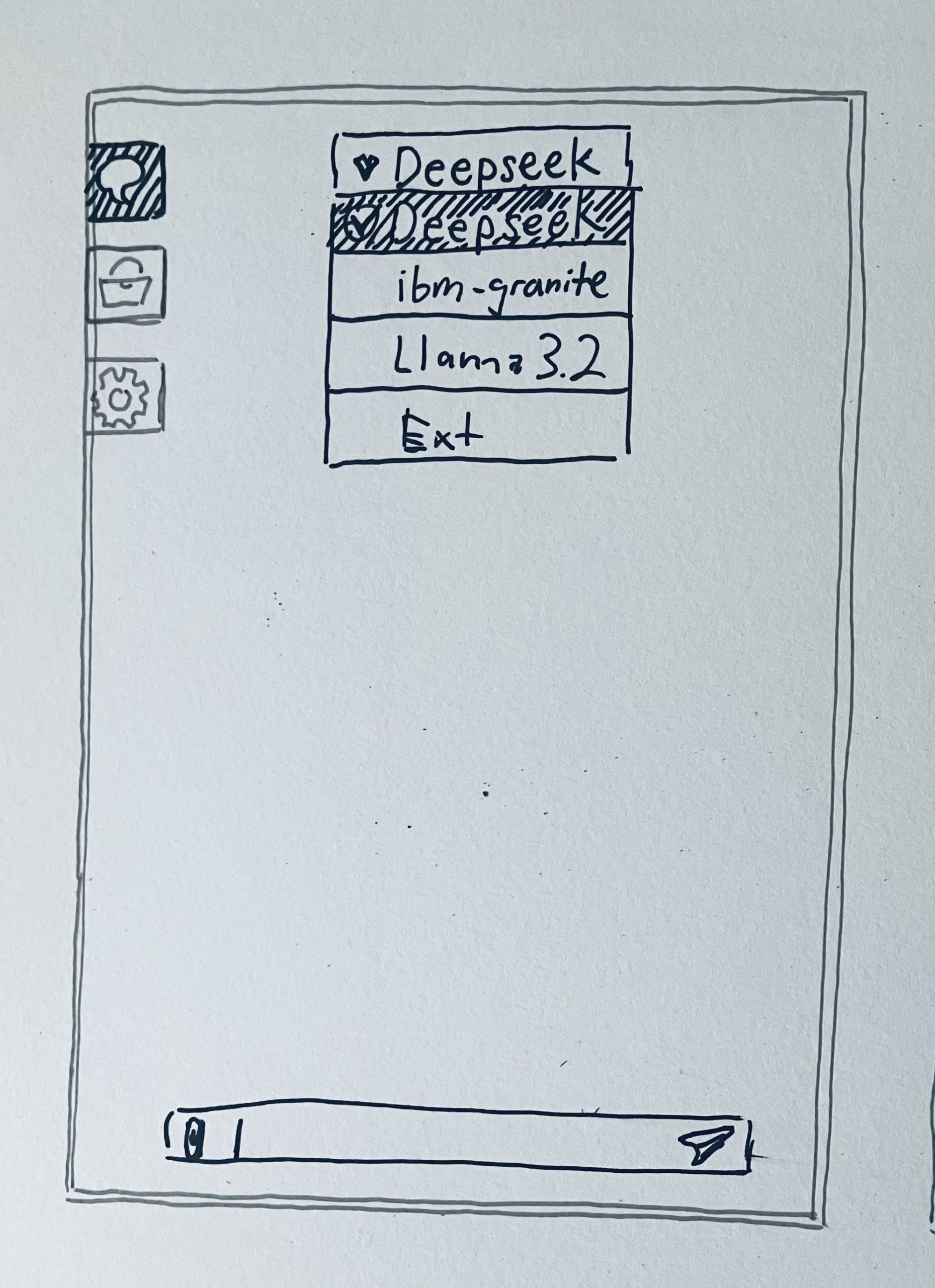
Left Navigation
- Nearly identical to what exists in GPT4ALL today, but with the removal of the home screen
- Like the tabs concept, no files page exists because it is assumed users will only be interested in uploading files for each chat
Considerations
- How would users be able to multitask within this interface?
11
Next Steps
- Create lo-fi wireframes showcasing multiple options
- Create lo-fi prototype for unmoderated user testing
- Create new user journey maps
Selected Works
Copyright © Nathan Nasby


